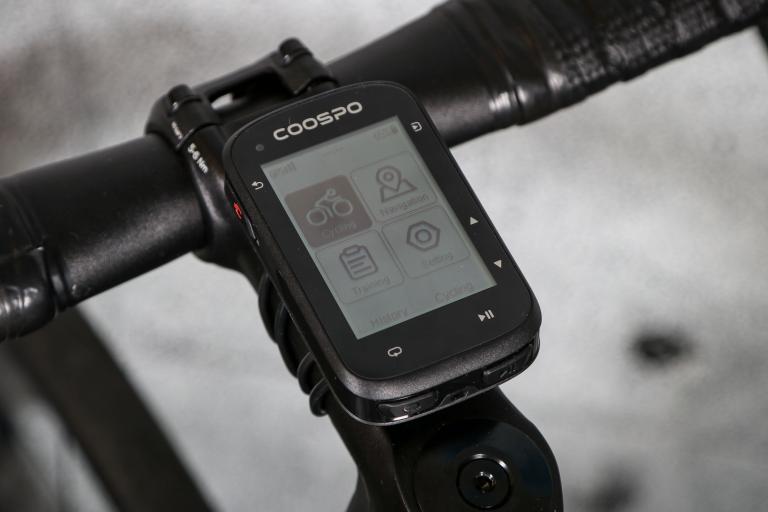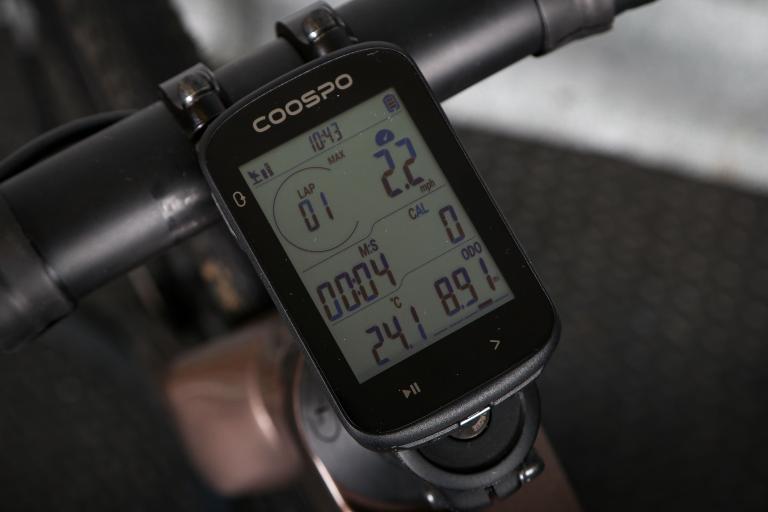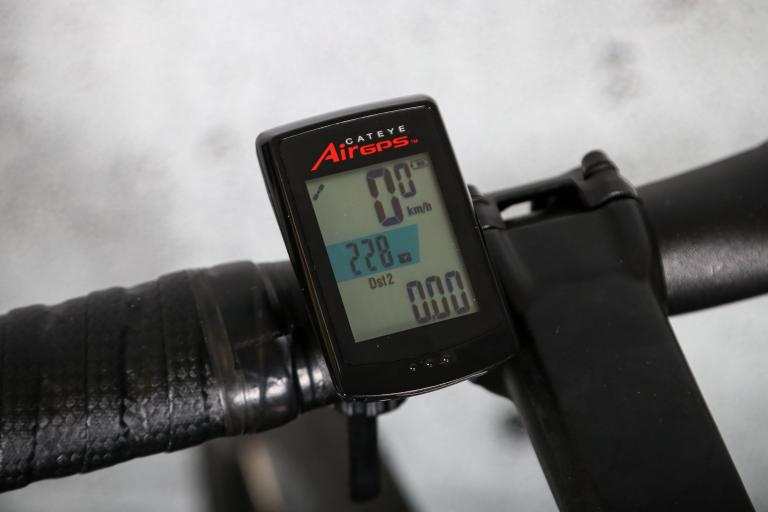- News
- Reviews
- Bikes
- Accessories
- Accessories - misc
- Computer mounts
- Bags
- Bar ends
- Bike bags & cases
- Bottle cages
- Bottles
- Cameras
- Car racks
- Child seats
- Computers
- Glasses
- GPS units
- Helmets
- Lights - front
- Lights - rear
- Lights - sets
- Locks
- Mirrors
- Mudguards
- Racks
- Pumps & CO2 inflators
- Puncture kits
- Reflectives
- Smart watches
- Stands and racks
- Trailers
- Clothing
- Components
- Bar tape & grips
- Bottom brackets
- Brake & gear cables
- Brake & STI levers
- Brake pads & spares
- Brakes
- Cassettes & freewheels
- Chains
- Chainsets & chainrings
- Derailleurs - front
- Derailleurs - rear
- Forks
- Gear levers & shifters
- Groupsets
- Handlebars & extensions
- Headsets
- Hubs
- Inner tubes
- Pedals
- Quick releases & skewers
- Saddles
- Seatposts
- Stems
- Wheels
- Tyres
- Health, fitness and nutrition
- Tools and workshop
- Miscellaneous
- Cross country mountain bikes
- Tubeless valves
- Buyers Guides
- Features
- Forum
- Recommends
- Podcast
review
 Cateye Stealth 50
Cateye Stealth 50£99.99
VERDICT:
Well-priced GPS unit with easy upgrades
Weight:
96g
Contact:
www.zyro.co.uk
At road.cc every product is thoroughly tested for as long as it takes to get a proper insight into how well it works. Our reviewers are experienced cyclists that we trust to be objective. While we strive to ensure that opinions expressed are backed up by facts, reviews are by their nature an informed opinion, not a definitive verdict. We don't intentionally try to break anything (except locks) but we do try to look for weak points in any design. The overall score is not just an average of the other scores: it reflects both a product's function and value – with value determined by how a product compares with items of similar spec, quality, and price.
What the road.cc scores meanGood scores are more common than bad, because fortunately good products are more common than bad.
- Exceptional
- Excellent
- Very Good
- Good
- Quite good
- Average
- Not so good
- Poor
- Bad
- Appalling
For what it's capable of, Cateye's Stealth 50 GPS based bar-mount computer is well priced, especially if you aren't bothered about getting the heart rate and cadence sensor options. If you do go for whole package though, initial set-up and upload functions can be more fiddly than on obvious Garmin rivals and it takes longer than the Garmin to tune in to the GPS signal.
The first ride out wasn't too promising. The sun shone directly onto the screen making it almost impossible to read at times. Future rides would confirm that the screen is a little more sensitive to light angles than that of Garmin's units but this accounted for only a tiny percentage of the time spent testing so was barely an issue in the bigger scheme of things.
The basic Stealth 50's £99.99 retail price is very reasonable for a GPS-based ANT+ enabled handlebar computer: ANT+ is the industry standard for add-on wireless devices that communicate with bar mount computers. Cateye's heart monitor strap costs another £49.99 and the wheel based cadence and speed sensor kit costs £44.99, or you could pay £179.99 to get the whole package, putting it roughly on a price par with a Garmin 500.
The speed and cadence sensor kit is an excellent idea if you use a home trainer because a synchronised Stealth 50 recognises data received from the wheel sensor and over-rides the GPS signal, so you can use the Stealth 50 on a home trainer without a GPS signal. Many other units require a GPS signal even if receiving supplementary speed and cadence data.
In the basic Stealth 50 Cateye has focused on providing essential information in a weather-sealed, easy to use handlebar mounted computer. It's compact at about 70 x 40mm, and it's easy to swap over from one bike to another: the cradle has a plastic strap with a hand tightened wheel.
The GPS sensor has a 1-, 2- or 5-second programmable data log rate for tuning accuracy and battery life. We started on the 1-second option but ended up on the 2-second after a couple of long rides where the battery charge died before the end of the ride.
Initial set-up and syncing with the heart monitor and cadence sensor required a few reads through the instructions but was pretty straight forward once we'd got our minds round all the different button presses. The on-line set-up videos are easier to deal with than the manual.
Once set up, you only need to use a single Mode button on the front to see data during rides. For starting/stopping every recorded session you hold that Mode button for two seconds.
We used the Stealth on a PC first and then on a Mac. This required Cateye's Sync software. PC use was straight forward but we couldn't get the Macbook (running OS 10.6.7) to communicate with the Stealth. We tried it on two other desktop Macs and it was fine. UK distributor Zyro initially stated the following about Mac set-up: 'The Cateye Sync software works fine on Macs. However, depending on security settings, it may not make it to your Applications folder. Cateye Agent needs to be in the Applications folder otherwise download is not completed.' We did that and it was fine on a four year old desktop Intel Mac, but we haven't managed to get it working on a first generation Intel Macbook.
The initial set-up process and methodical trawl through the instructions took us about 35 minutes. We like the fact that it uses a click-in dock to connect to the computer lead rather than another USB plug: the USB socket covers on Garmins can easily be left open and are prone to moisture ingress. Rides can be uploaded to a map with fly-through analysis in a sidebar, or you can share ride details straight to Cateye Atlas, Facebook, Strava or Training Logs.
There are fewer choices in screen presentation than on the Garmin Edge 500 we were comparing it with, but the data displays, screen icons and clock will be enough for most riders and you can set the back-light to automatically be available at lighting up time.
The display always shows the current speed but it's simple to scroll through average and maximum speed, distance, cadence, heart rate and and power. ANT+ enabled heart rate and cadence monitors, or power sensors, are easily synched. But the fact that you can't programme the screen display boxes will irritate riders who want to instantly see specific data.
While we like the fact that the power on and menu setting buttons are at the back of the unit, preventing accidental stopping and starting, this also means that you need to remember to reset the Mode button on the front before each ride. This could be seen by some as a downside of the Stealth 50's simplicity. The lack of provision for map display may be seen as another downside. But we like the automatic pause function when you're forced, or choose, to stop during a ride and the programmable ANT+ aspects are impressive on a £100 unit.
So far, it appears to be very weather-proof, it charges quickly via a USB port and it takes less than a minute to remove the handlebar/stem mount and attach it to another bike. The fact that you can use it with the speed/cadence sensor on a static home trainer will add appeal to lots of riders too.
Verdict
Well priced for a GPS based computer. ANT+ add-ons offer easy upgrade potential. Easy to use with a PC or an up to date Intel Mac but communication issues with older Intel Macbooks.
road.cc test report
Make and model: Cateye Stealth 50
Size tested: N/A
Tell us what the product is for, and who it's aimed at. What do the manufacturers say about it? How does that compare to your own feelings about it?
For the average buyer it will be seen as a direct competitor to Garmin's lower priced units, it's very easy to swap between bikes and web uploads/downloads are easy once you've digested the instructions. The screen isn't as programmable as a Garmin but the single mode button to scroll between information is quick and easy. Theoretically compatible with PCs and Intel Macs but we couldn't get it to talk to an older Intel Macbook
Tell us some more about the technical aspects of the product?
Displays Current speed, Clock (12 or 24-hour modes can be selected. Automatic adjustment using GPS), Elapsed time, Heart Rate, Cadence, Trip distance, Average speed, Maximum speed, Total distance, Date (Automatic adjustment using GPS), Lithium-ion rechargeable battery, Battery recharge and data communication via USB Cradle. Standard charging time Approx. 5 hours (USB2.0) Standard operating time Approx. 10 hours. Recharge/discharge number of times About 300 times (until the rated capacity drops to 70%). Liquid crystal display (EL backlight: Lights up constantly during the night-time). Sensor signal transmission system:ANT+ Weight:60 grams
Rate the product for quality of construction:
8/10
Robust and weatherproof.
Rate the product for performance:
8/10
No issues at all apart from the frustration that we couldn't get it to communicate with an early Intel Macbook.
Rate the product for durability:
8/10
Long term durability unknown so far.
Rate the product for weight, if applicable:
8/10
Rate the product for value:
8/10
Good value as it is. Best value package is if you buy the heart monitor and speed/cadence sensor at the same time.
Tell us how the product performed overall when used for its designed purpose
Easy to use. Most riders will be happy with the info provided and the uploads to maps on www.cateyeatlas.com is useful.
Tell us what you particularly liked about the product
Simple to use once the instructions are digested. Good screen display in normal light and easy to scroll between screen info. Backlight is useful. Easy to use on a home trainer without a GPS signal (if you buy the speed/cadence sensor upgrade).
Tell us what you particularly disliked about the product
Wouldn't work with an early Intel Macbook. Screen hard to see in certain angles of sunlight.
Did you enjoy using the product? Yes.
Would you consider buying the product? Yes.
Would you recommend the product to a friend? Yes.
Anything further to say about the product in conclusion?
We'd be happier if communication issues with early Intel Macbooks could be resolved, but otherwise does exactly what it says on the tin.
About the tester
Age: 58 Height: 181 Weight: 78kg
I usually ride: Merlin Ti My best bike is: Ibis Silk SL
I've been riding for: Over 20 years I ride: Every day I would class myself as: Expert
I regularly do the following types of riding: cyclo cross, commuting, touring, club rides, sportives, general fitness riding, fixed/singlespeed, mtb,
Latest Comments
- jpj84 1 sec ago
Seems a bit twee having "disc" in the bike name in 2025: of course it's got disc brakes, it's 2025😆
- mdavidford 9 min 29 sec ago
Quite right - get those soapboxes off our roads. As everyone knows, the right place for them is the internet.
- Bungle_52 12 min 44 sec ago
It's finally live. Here is the link :...
- mctrials23 13 min 46 sec ago
I sometimes feel like I am mad. Do they genuinely believe this sentencing is a deterrent. The driving standards in Ireland are a fucking joke and...
- David9694 14 min 4 sec ago
First warm and sunny weekend for the New Forest
- Rendel Harris 1 hour 17 min ago
The Michelin Power Gravel Adventure might fit your requirements, or the Vittoria Terreno Zero ("tubeless ready" but no reason you couldn't run it...
- hawkinspeter 1 hour 12 min ago
Council showing 'utter disregard' for people against Liveable Neighbourhood scheme:...
- hawkinspeter 1 hour 30 min ago
Better in some places and worse in others. There's still pletny of gridlock going on. I want them to bring back the rickety flyover by Temple Meads...
- lawrence18uk 11 hours 11 min ago
" in what appears to be two random, completely unprovoked attacks."...




Add new comment
2 comments
Regarding the visibility of the screen, the reviewer stated it was difficult to see in certain light conditions...I haven't found that at all. In fact, I find it better that the Garmin Edge 500. Way better.
When I'm heading downhill @ 40+ MPH the cateye is easier to glance at. Although the Edge 500 has a lot more data to view.
Both were around £80 so the price wasn't the issue.
After a puncture, I was a little late getting back to base as sunset was approaching. The Stealth 50's green glow back light (which you can set to turn on/off at specific times) came on (something I didn't think I'd use), which is just brilliant, again better than the Edge 500.
The 510 didn't seem to address the screen clarity issue for me. First and foremost I want to see the screen in all conditions. The Cateye doesn't have the on screen data or the built in altimeter (although the Edge 500's seems to vary quite a lot).
Of course they provide the same data once data is uploaded to Strava.
I hope Cateye bring out a Stealth 50 version 2...with more data on screen.
I have this unit and after some initial teething problems (sorted out wonderfully by Zyro and Cateye Japan) it has worked flawlessly. It now offers simple and direct (one click) download to Strava, Cateye Atlas or Training Peaks following the latest software update. The unit does not offer turn by turn instructions or a visible ride map (you get to see the route you've ridden once you download the data to either of the 3 mapping programs referred to above) but this has not been a handicap to its usefulness for me. The unit is really small and compact and only a little bit bigger than the cateye wireless computer. I would give it 5 stars.